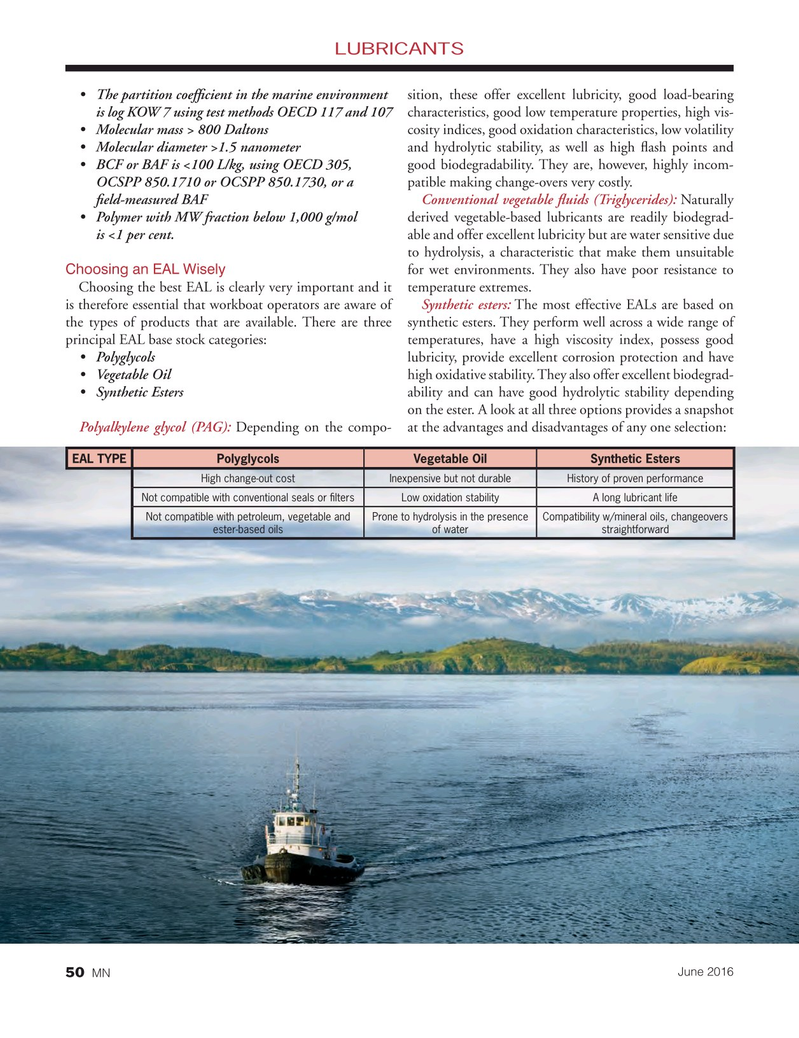
Page 50: of Marine News Magazine (June 2016)
Combat & Patrol Craft Annual
Read this page in Pdf, Flash or Html5 edition of June 2016 Marine News Magazine
LUBRICANTS • The partition coef? cient in the marine environment sition, these offer excellent lubricity, good load-bearing is log KOW 7 using test methods OECD 117 and 107 characteristics, good low temperature properties, high vis- • Molecular mass > 800 Daltons cosity indices, good oxidation characteristics, low volatility • Molecular diameter >1.5 nanometer and hydrolytic stability, as well as high ? ash points and • BCF or BAF is <100 L/kg, using OECD 305, good biodegradability. They are, however, highly incom- OCSPP 850.1710 or OCSPP 850.1730, or a patible making change-overs very costly.
? eld-measured BAF Conventional vegetable ? uids (Triglycerides): Naturally • Polymer with MW fraction below 1,000 g/mol derived vegetable-based lubricants are readily biodegrad- is <1 per cent. able and offer excellent lubricity but are water sensitive due to hydrolysis, a characteristic that make them unsuitable
Choosing an EAL Wisely for wet environments. They also have poor resistance to
Choosing the best EAL is clearly very important and it temperature extremes.
is therefore essential that workboat operators are aware of Synthetic esters: The most effective EALs are based on the types of products that are available. There are three synthetic esters. They perform well across a wide range of principal EAL base stock categories: temperatures, have a high viscosity index, possess good • Polyglycols lubricity, provide excellent corrosion protection and have • Vegetable Oil high oxidative stability. They also offer excellent biodegrad- • Synthetic Esters ability and can have good hydrolytic stability depending on the ester. A look at all three options provides a snapshot
Polyalkylene glycol (PAG): Depending on the compo- at the advantages and disadvantages of any one selection:
EAL TYPE Polyglycols Vegetable Oil Synthetic Esters
High change-out cost Inexpensive but not durable History of proven performance
Not compatible with conventional seals or ? ltersLow oxidation stability A long lubricant life
Not compatible with petroleum, vegetable and Prone to hydrolysis in the presence Compatibility w/mineral oils, changeovers ester-based oils of water straightforward
June 2016
MN 50
MN June16 Layout 50-59.indd 50 5/17/2016 10:31:42 AM

 49
49

 51
51
